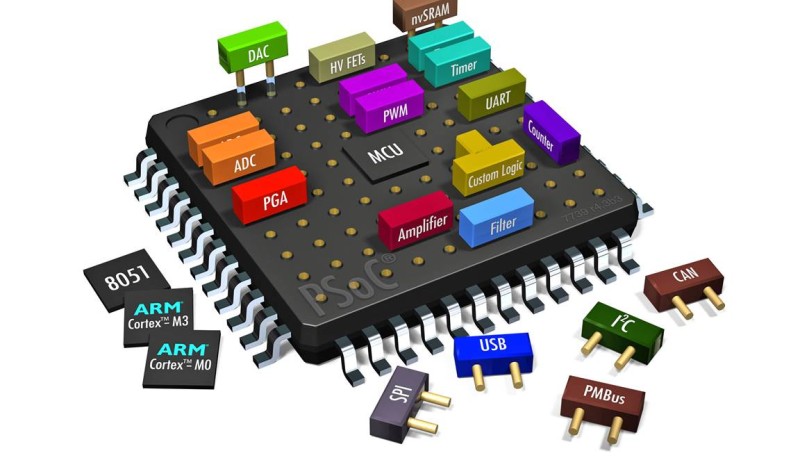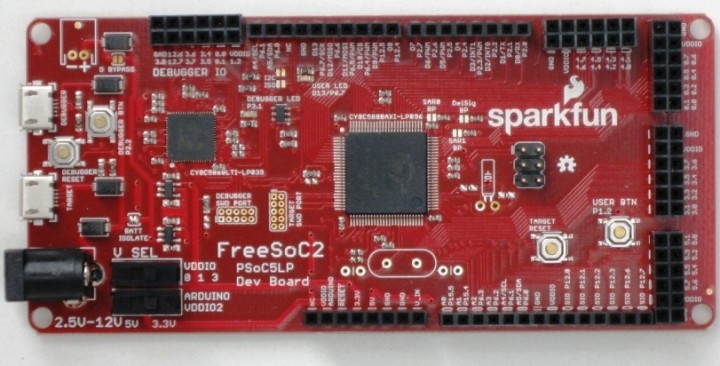Review: The FreeSoC2 PSoC® 5LP Dev Board
August 07, 2017
on
on

The FreeSoC2 PSoC® 5LP Dev Board using a Cypress PSoC MCU is something of a hybrid; it has the same width as an Arduino Uno and can accept standard Arduino shields. The board can also be set up to be programmed using the Arduino IDE. To exploit its full potential however it’s necessary to use the Cypress PSoC Creator™IDE which allows you to build complete solutions with access to all of the chip’s features.

The four-layer board measures approximately 120 x 54 mm and pin designations (Arduino 1.0 compatible pins have two labels for each pin) are printed in a tiny font adjacent to the header positions. The board's schematic from Sparkfun identifies the components, jumper positions and headers but the labeling is not printed on the PCB. Positions are provided on board for installation of a 32-kHz crystal for RTC applications and also a crystal for the main processor if an application requires a more precise clock source. Both have places to fit loading capacitors for the crystals.
The board can be powered from four separate sources. When used as a development board in the Arduino IDE or when running an application using the USB port it can be powered from the target micro USB socket.
When used with the Cypress PSoC Creator IDE power will be delivered via the debugger micro USB socket. A barrel socket is provided for a supply in the range of 2.5 to 12 V and an additional position is available but does not have a socket fitted.
All of the supplies have series-connected Schottky diodes to protect against supply reversal and the empty position gives the option to bypass the Schottky should the voltage drop be unacceptable. In my case, the diode forward voltage drop was measured at 0.3 V in normal operation. A solder bridge can be removed to effectively isolate a battery supply lower than 4.7 V.

The four-layer board measures approximately 120 x 54 mm and pin designations (Arduino 1.0 compatible pins have two labels for each pin) are printed in a tiny font adjacent to the header positions. The board's schematic from Sparkfun identifies the components, jumper positions and headers but the labeling is not printed on the PCB. Positions are provided on board for installation of a 32-kHz crystal for RTC applications and also a crystal for the main processor if an application requires a more precise clock source. Both have places to fit loading capacitors for the crystals.
The board can be powered from four separate sources. When used as a development board in the Arduino IDE or when running an application using the USB port it can be powered from the target micro USB socket.
When used with the Cypress PSoC Creator IDE power will be delivered via the debugger micro USB socket. A barrel socket is provided for a supply in the range of 2.5 to 12 V and an additional position is available but does not have a socket fitted.
All of the supplies have series-connected Schottky diodes to protect against supply reversal and the empty position gives the option to bypass the Schottky should the voltage drop be unacceptable. In my case, the diode forward voltage drop was measured at 0.3 V in normal operation. A solder bridge can be removed to effectively isolate a battery supply lower than 4.7 V.
Read full article
Hide full article


Discussion (0 comments)